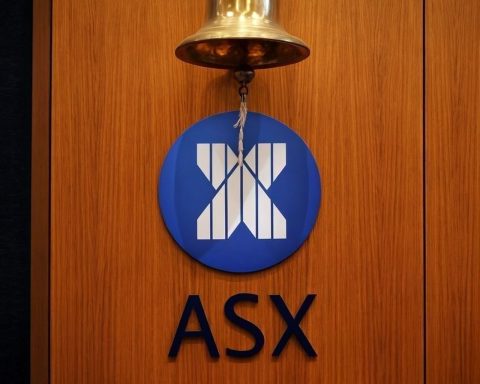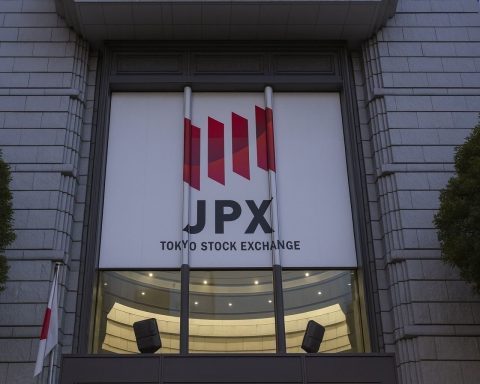Tokyo’s stock market ended Monday slightly lower, capping a volatile session in which geopolitical tensions with China and weaker‑than‑expected economic data overshadowed a tentative rebound in global risk appetite.
The Nikkei 225 closed at 50,323.91, down 52.62 points or 0.10%, while the broader TOPIX fell 0.37% to 3,347.53. [1]
Key Takeaways for Tokyo Stock Exchange on 17 November 2025
- Nikkei 225 dipped 0.10% after Japan’s Q3 GDP showed the first contraction in six quarters. [2]
- Tourism and retail stocks plunged after China warned its citizens against travelling to and studying in Japan, amid a worsening diplomatic rift over Taiwan. [3]
- Market breadth was weak, with decliners far outnumbering gainers across the Tokyo Stock Exchange, even as select industrials and materials names rallied to record highs. [4]
Tokyo Stock Market Overview: Modest Losses After a Wild Intraday Swing
Despite the modest closing move, Monday’s session on the Tokyo Stock Exchange (TSE) was anything but calm.
- The Nikkei 225 slipped 0.10% to 50,323.91, extending losses after Friday’s 1.8% drop but remaining above the key 50,000 line by the close. [5]
- The TOPIX index, which tracks a broader swath of TSE listings, fell 0.37% to 3,347.53. [6]
- At one point, the Nikkei plunged more than 500 points and briefly dipped below 50,000, before dip‑buyers stepped in and trimmed losses into the close. [7]
Market breadth underlined the cautious mood:
- On the Prime Market, there were 932 decliners, 618 gainers and 63 unchanged issues. [8]
- Across the wider TSE, falling stocks outnumbered advancing ones by 2,312 to 1,334, with 192 names flat. [9]
- The Nikkei volatility index jumped 13.6% to 31.23, signalling elevated demand for downside protection. [10]
Regionally, Tokyo’s performance lagged some peers but fit into a broader risk‑off pattern in Asia:
- The Nikkei’s 0.1% dip came as Asian markets traded mixed to lower and European indices opened in the red, with investors focused on Nvidia’s upcoming earnings and fading hopes of a near‑term U.S. rate cut. [11]
Macro Backdrop: Japan’s GDP Contracts for the First Time in Six Quarters
The most important macro story for Japan — and a key driver of TSE sentiment today — was the Q3 GDP report.
Government data showed that:
- GDP shrank at an annualised rate of 1.8% in July–September, better than market forecasts for a 2.5% drop but still marking the first contraction in six quarters. [12]
- On a quarter‑on‑quarter basis, the economy fell 0.4%, compared with expectations for a 0.6% decline. [13]
The details highlight why investors turned more cautious:
- Exports dropped sharply, hit by new U.S. tariffs on Japanese goods, including autos, squeezing one of Japan’s traditional growth engines. [14]
- Private consumption eked out just 0.1% growth, underlining pressure on households from higher living costs. [15]
- Residential investment slumped around 9% quarter‑on‑quarter, partly due to stricter building rules introduced earlier this year. [16]
- Capital expenditure rose about 1%, providing a rare bright spot and suggesting corporates are still willing to invest despite macro headwinds. [17]
For policy makers, this data is awkwardly timed:
- Prime Minister Sanae Takaichi, who took office in October, is preparing a substantial fiscal stimulus package to cushion households and revive growth. [18]
- Analysts now see the Bank of Japan (BOJ) as less likely to hike rates in December, arguing that the growth setback gives the central bank “pause for thought,” even as inflation remains above target. [19]
For equity investors, the takeaway is straightforward: growth momentum has clearly slowed, and policy support may be extended, but any BOJ normalization is likely to be nudged into 2026 — a mix of good and bad news for different sectors on the TSE.
Geopolitics in Focus: China Travel Warning Slams Tourism & Retail Stocks
The other major drag on the Tokyo Stock Exchange today was geopolitics, specifically a sharp escalation in tensions between Japan and China over Taiwan.
Over the weekend:
- China issued an advisory urging its citizens to avoid travelling to — or studying in — Japan, citing safety and political concerns after remarks by Prime Minister Takaichi suggesting Japan could respond militarily to a Chinese attack on Taiwan. [20]
Markets reacted immediately:
- Reuters reported that tourism‑linked Japanese stocks “plunged” on Monday, with department store operator Isetan Mitsukoshi tumbling about 10–11%, Tokyo Disneyland operator Oriental Land sliding around 6%, and Japan Airlines (JAL) losing more than 4%. [21]
- Additional coverage cited Shiseido (cosmetics) down roughly 9%, Takashimaya more than 5%, and Fast Retailing (Uniqlo) off around 4–5%, reflecting fears of a sustained drop in Chinese tourist and shopper demand. [22]
- Other consumption names such as Ryohin Keikaku (Muji operator) also saw declines of around 9%, signalling broad stress across travel, retail and hospitality segments. [23]
Why investors are worried:
- Chinese visitors make up roughly a quarter of all inbound tourists to Japan, and over 650,000 Chinese travellers visited Japan in September alone, according to tourism data cited by analysts. [24]
- Nomura Research Institute estimates that a sustained Chinese travel boycott could wipe out around ¥2.2 trillion (≈$14 billion) in annual economic activity and shave about 0.36 percentage points off Japan’s real GDP. [25]
Diplomatic efforts are already under way:
- Tokyo has dispatched senior Foreign Ministry official Masaaki Kanai to Beijing to meet his counterpart Liu Jinsong, in an attempt to ease tensions and limit the damage to Japan’s tourism‑dependent sectors. [26]
For the TSE, this episode is a stark reminder of how exposed Japanese service and retail names are to geopolitical shocks, particularly involving China.
Sector and Stock Movers on the Tokyo Stock Exchange
Tourism, Retail and Consumer Names: Deep Red
The heaviest selling on Monday was concentrated in inbound‑sensitive areas:
- Department stores & malls: Isetan Mitsukoshi plunged over 10%, while other big names such as Takashimaya and J. Front Retailing saw losses in the mid‑single digits as investors priced in weaker footfall from foreign shoppers. [27]
- Theme parks & leisure: Oriental Land, operator of Tokyo Disney Resort, fell nearly 6% on fears that Chinese visitor numbers could slump. [28]
- Airlines & travel: JAL slid roughly 4–5%, while ANA Holdings was down more than 3%; both carriers said they are monitoring bookings but have yet to see a sharp wave of cancellations. [29]
- Cosmetics & fashion: Shiseido slumped around 9%, and Fast Retailing (Uniqlo) dropped more than 5%, underlining how vulnerable beauty and apparel brands are to any prolonged Chinese pullback. [30]
These moves made tourism and retail the epicentre of the sell‑off, even though the headline indices only lost a fraction of a percent.
Cyclicals, Materials and Industrials: Pockets of Strength
Not all of TSE was under pressure. Some cyclicals and materials names bucked the trend:
- Mitsui Mining & Smelting (Mitsui Kinzoku) was the top performer on the Nikkei 225, jumping 8.9% to an all‑time high. [31]
- Japan Steel Works gained just over 7%, and Furukawa Electric climbed more than 5%, helped by expectations for infrastructure demand and a still‑weak yen. [32]
These gains helped to limit the broader index’s downside, even as consumer‑facing stocks sank.
Tech, Exporters and Financials: Mixed Performance
Elsewhere on the TSE:
- Technology & chip equipment: Tokyo Electron advanced nearly 4% and Advantest edged higher, as investors cautiously bought beaten‑down AI‑exposed names ahead of Nvidia’s earnings. Screen Holdings, however, slipped around 1%. [33]
- Exporters: Big exporters such as Sony, Panasonic and Canon traded lower — with declines ranging from about 1% to 4% — as investors digested weaker GDP and lingering trade tensions with the U.S. [34]
- Banks: The sector was mixed. Sumitomo Mitsui Financial Group rallied more than 4% and Mizuho Financial gained nearly 1%, while Mitsubishi UFJ Financial Group slipped around 1.5%. The moves reflected competing forces: a softer GDP print (bad for loan growth) vs expectations that BOJ policy will remain accommodative for longer (supportive for asset prices). [35]
- SoftBank Group: The tech conglomerate, fresh off a blockbuster ¥2.5 trillion profit linked partly to gains in its OpenAI exposure and a widely watched exit from Nvidia, traded higher intraday (around +4% in the morning session), helped by selective buying in tech and derivatives‑linked strategies. [36]
Sector data from Investing.com showed Paper & Pulp, Transport and Communication among the worst‑performing groups on the day, echoing the hit to logistics and travel demand. [37]
Corporate and Listing News from Tokyo Stock Exchange on 17 November 2025
Beyond index moves, several Tokyo Stock Exchange‑listed companies and the exchange itself generated notable headlines today.
Tourism & Pharma: Nxera and Sector Restructuring
- Nxera Pharma, a biotech group listed on the TSE under ticker 4565, announced a “focused restructuring” aimed at accelerating its path to profitability, including portfolio prioritisation and cost controls across Japan, Europe and the U.S. [38]
- The company, with key hubs in Tokyo and Osaka, signalled a sharper focus on its most advanced drug candidates and hinted at leaner operations as it navigates a tough funding environment for biotech. [39]
- Separately, Nxera has been using video interviews and investor events (highlighted in recent Japan‑focused investor communications) to broaden its shareholder base — a strategy that aligns with broader JPX efforts to improve investor relations and transparency among TSE‑listed firms. [40]
Capital Raising: CCReB Advisors
- CCReB Advisors Inc., a financial advisory firm listed on the TSE, announced a new share issuance and pricing plan via a regulatory filing. The deal, highlighted by TipRanks, increases the company’s equity base and is framed as funding for strategic investment opportunities. [41]
- The stock currently carries a “Strong Sell” technical signal on some platforms, reflecting market caution around dilution and sector headwinds, despite a market cap of roughly ¥16 billion. [42]
Strategy Updates: Daiwa House Industry
- Daiwa House Industry (TSE: 1925) published presentation materials dated 17 November 2025, outlining progress on its 7th medium‑term management plan and framing the upcoming 8th plan, with emphasis on overseas expansion, M&A around construction subsidiaries, and capital‑return policies. [43]
- For TSE investors, the slides underscore how Japan’s leading homebuilders are trying to balance domestic demographic challenges with growth in the U.S. and Europe.
JPX Listing & Delisting Moves
The Japan Exchange Group (JPX), operator of the Tokyo Stock Exchange, also reported several listing‑related changes effective today:
- Koken Boring Machine Co., Ltd. (6297) was officially delisted from the TSE Standard market on 17 November 2025 following an acquisition via tender offer and reverse stock split. [44]
- Earlier JPX notices flagged CARTA HOLDINGS, Inc. for a change in treatment of its shares as “securities in lieu of money” from 17 November, affecting how the stock can be used as collateral in margin and when‑issued transactions. [45]
- Another JPX alert confirmed that a separate issuer had filed its semi‑annual securities report by the 17 November deadline, avoiding designation as a “Security Under Supervision,” a label that can weigh on investor sentiment. [46]
These micro‑level changes may not move the Nikkei or TOPIX in a single session, but they matter for index composition, liquidity and collateral rules that professional investors track closely.
How Global Factors Intersected with Tokyo Trading
Monday’s Tokyo session didn’t happen in isolation. Several global themes threaded through TSE price action:
- U.S. markets finished last week on a choppy note, with the Dow down about 0.7% on Friday and the S&P 500 essentially flat, as traders debated whether the Federal Reserve will cut rates in December. [47]
- Futures on the S&P 500 and Nasdaq 100 were in positive territory during Asian hours today, with investors laser‑focused on Nvidia’s upcoming earnings, a key sentiment driver for global AI‑and‑chip trades that heavily influence Japanese tech names and SoftBank. [48]
- In currencies, the dollar strengthened slightly to around ¥154.7, helping exporters at the margin but underscoring how a weak yen has become a double‑edged sword — supportive for corporate earnings but painful for consumers and import‑heavy sectors. [49]
For TSE investors, the message is that domestic shocks (GDP and the China spat) are currently in the driver’s seat, but U.S. rate expectations and AI‑related tech flows remain critical background forces.
What Today’s Moves Mean for Investors in Japanese Equities
Putting it all together, 17 November 2025 on the Tokyo Stock Exchange tells a nuanced story.
1. Policy and Macro Risk Are Back on the Radar
- The GDP contraction confirms that Japan’s post‑pandemic expansion has hit a soft patch, mainly via exports and housing.
- At the same time, a weaker economy reduces near‑term pressure on the BOJ to tighten policy, which can be supportive for valuations in rate‑sensitive sectors such as real estate and growth tech. [50]
2. Geopolitics Can Move Entire Sectors Overnight
- The China travel advisory highlighted how concentrated some Japanese companies’ earnings are in Chinese tourists and shoppers.
- Tourism, retail and cosmetics names face headline risk and potential earnings downgrades if the rift persists, although any diplomatic thaw — such as progress from Kanai’s meetings in Beijing — could trigger equally sharp rebounds. [51]
3. Rotation Beneath the Surface
- While the indices moved only slightly, there was aggressive rotation under the hood:
- From consumer and tourism into materials, industrials and selected tech (like Mitsui Mining & Smelting, Japan Steel Works, Tokyo Electron). [52]
- For active managers, days like today underscore the importance of stock selection within Japan, not just broad index exposure.
4. Near‑Term Catalysts to Watch
Looking ahead, investors in Japanese equities and TSE‑listed names will be watching:
- Further government details on Takaichi’s stimulus package, including any targeted support for tourism or export‑heavy industries. [53]
- The BOJ’s December meeting and forward guidance on 2026 hikes. [54]
- The trajectory of the Japan–China relationship, especially whether the travel advisory becomes a long‑term restriction or is quietly softened after diplomatic talks. [55]
- Global tech sentiment post‑Nvidia earnings, which will feed directly into Tokyo’s heavyweight tech and investment names, including SoftBank Group. [56]
Bottom Line
On 17 November 2025, the Tokyo Stock Exchange delivered a small headline loss but a big message:
- Japan’s economy is wobbling under the pressure of trade tariffs and weak external demand,
- Domestic politics and new leadership in Tokyo are colliding with geopolitical risks in Asia, and
- The TSE remains highly sensitive to both macro surprises and cross‑border diplomatic shocks, even as global investors continue to see Japan as a core equity market in Asia.
For investors, the day’s action reinforces a familiar but urgent lesson: in Japan, macro, politics and sector‑specific earnings stories are inseparable — and the Tokyo Stock Exchange is where all three collide in real time.
References
1. indexes.nikkei.co.jp, 2. indexes.nikkei.co.jp, 3. www.reuters.com, 4. english.news.cn, 5. indexes.nikkei.co.jp, 6. www.china.org.cn, 7. english.news.cn, 8. english.news.cn, 9. www.investing.com, 10. www.investing.com, 11. apnews.com, 12. www.reuters.com, 13. www.reuters.com, 14. apnews.com, 15. apnews.com, 16. apnews.com, 17. www.rttnews.com, 18. apnews.com, 19. www.morningstar.com, 20. www.reuters.com, 21. www.reuters.com, 22. www.malaymail.com, 23. www.reuters.com, 24. www.reuters.com, 25. www.reuters.com, 26. www.livemint.com, 27. www.investing.com, 28. www.reuters.com, 29. www.reuters.com, 30. www.investing.com, 31. www.investing.com, 32. www.investing.com, 33. www.rttnews.com, 34. www.rttnews.com, 35. www.rttnews.com, 36. www.rttnews.com, 37. www.investing.com, 38. www.taiwannews.com.tw, 39. www.taiwannews.com.tw, 40. sg.finance.yahoo.com, 41. www.tipranks.com, 42. www.tipranks.com, 43. www.marketscreener.com, 44. www.jpx.co.jp, 45. www.jpx.co.jp, 46. www.jpx.co.jp, 47. www.rttnews.com, 48. apnews.com, 49. www.wral.com, 50. www.reuters.com, 51. www.reuters.com, 52. www.investing.com, 53. www.ft.com, 54. www.investing.com, 55. www.reuters.com, 56. www.investing.com










